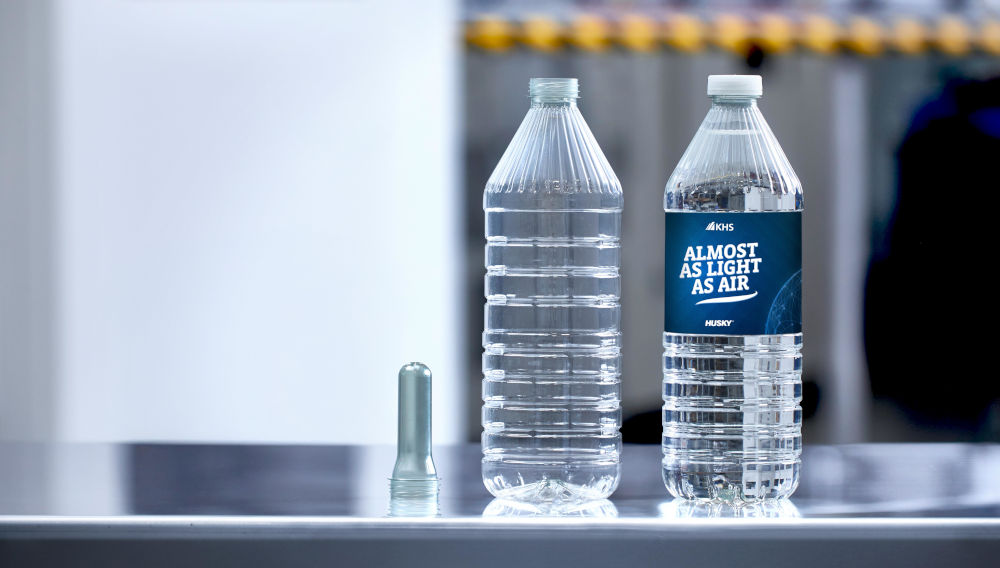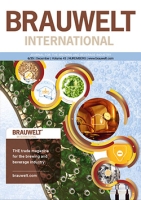KHS and Husky develop very light PET bottle for still beverages
New benchmark | Under the working title of Factor 101, KHS, in close cooperation with Canadian-based injection molding technology equipment and services provider Husky Technologies, has produced a container that uses just 5.89 grams of material to hold 591 milliliters of product. This is equivalent to the 20-ounce size common in the United States.
At drinktec 2017 KHS presented its Factor 100 concept as a feasibility study that featured a PET bottle weighing approximately five grams with a capacity of 500 milliliters. A number of optimizations have now been made to the further development.
Extremely robust lightweight
To increase stability, the shoulder design of Factor 101 has been modified and the bottle body reinforced with functional webbing. Moreover, KHS packaging designers have developed a base with a pop-in effect. Here, the base pops inwards to a certain degree when a top load is applied, increasing the internal pressure and therefore the stability of the bottle.
Two hundred newtons is a common top load threshold in the industry; at 220 newtons, the Factor 101 exceeds this. In order to achieve this high value for a PET bottle used for still beverages, adapting just the container shape wasn’t enough. This is why KHS joined forces with the specialists at Husky. The company has a wealth of expertise as the world’s leading equipment supplier of PET preform injection molding systems and services and has been in cooperation with KHS for many years.
30% less material
Compared to the standard lightweight PET container holding 500 milliliters of still water that usually weighs seven grams on the US market, the joint KHS/Husky product requires 30% less material. It can also be manufactured entirely from rPET.
However, bottle geometry is just one factor. “Line compatibility in the high-capacity range of up to 90,000 bottles per hour was a key challenge,” says KHS packaging designer Fabian Osterhold. “The main issues here were conveying, labeling and the secondary packaging. In the shrink tunnel, for instance, special attention had to be paid to the bottle shoulder – and the bottle of course shouldn’t fall over during conveying.”
“Not only the weight but also the time in which the project was implemented are possibly record-breaking,” Osterhold states. Thanks to the great teamwork between Husky and the many KHS departments involved in the development process, the project was successfully concluded in just four months.
Keywords
PET beverage packaging product news still beverages
Source
BRAUWELT International 2025
Companies
- KHS GmbH, Bad Kreuznach, Germany



